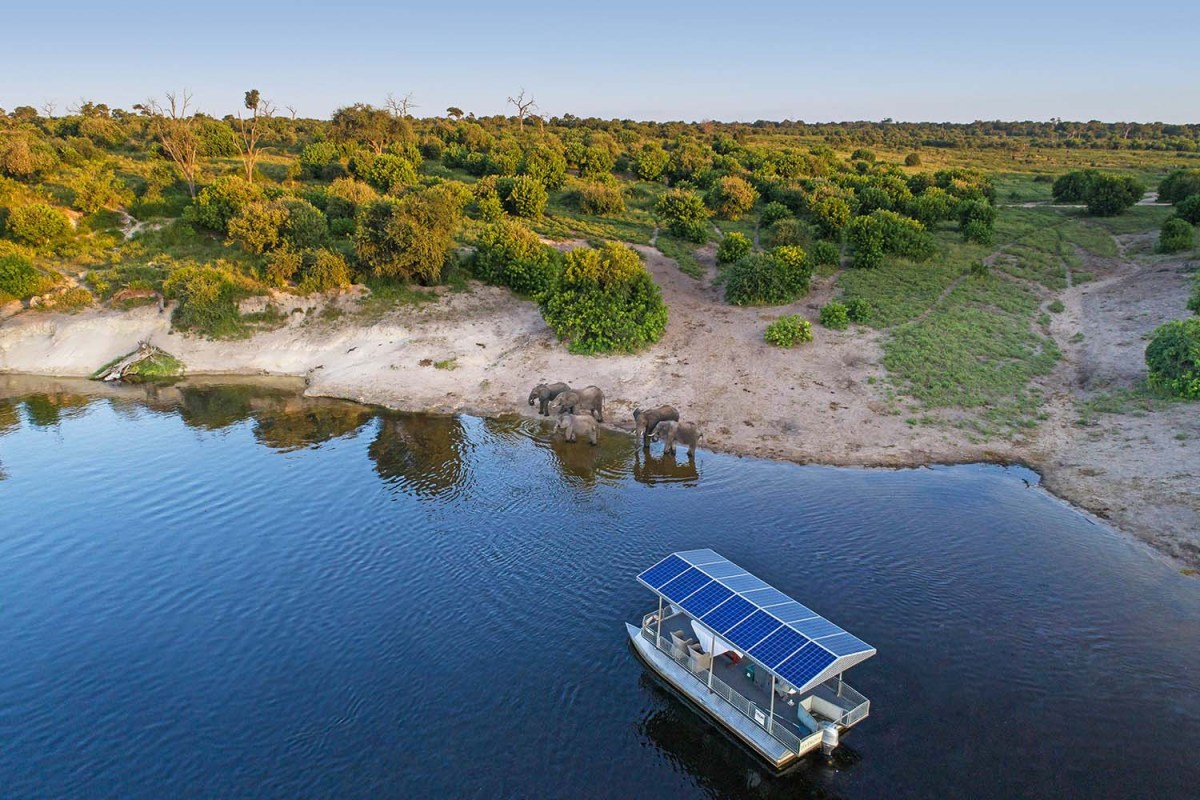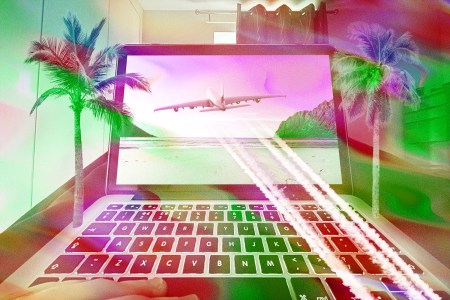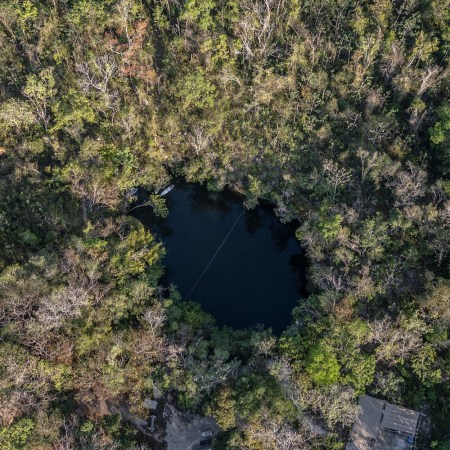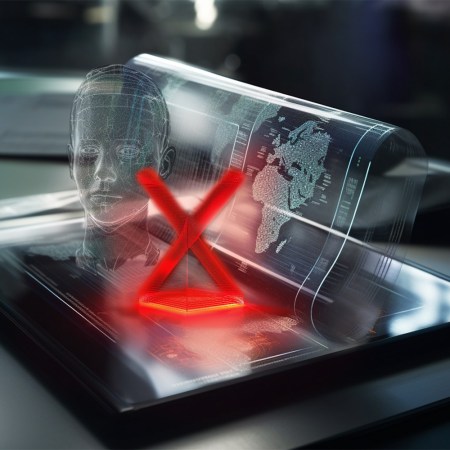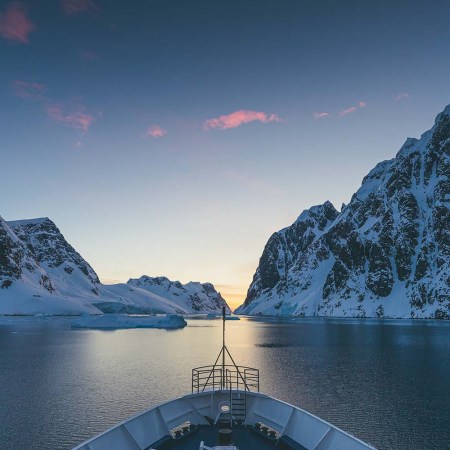On the one hand, nature travel is good for the economy, incentivizing its own protection. That’s helpful when money is the only kind of green a politician can appreciate. (It was tourism dollars that helped to reforest Costa Rica’s depleted canopies.) On the other hand, tourism is 8-11% of global greenhouse gasses, half of which are from transportation. Those gasses tend to make the planet hotter and forests more flammable.
So what can be done? By land, sea and air, there are those in tourism who are addressing their climate impact. From frozen polar bear adventures in the Canadian subarctic and African safaris on the hot savannah to expedition cruise ships and balloon-powered space tourism, carbon neutral trendsetters are emerging.
In the chilled tundra of Churchill, Canada, polar bear tourism of Frontiers North Adventures has relied on diesel-fuel engines to power their massive Tundra Buggies since 1987. Those vehicles launch from their Tundra Buggy Lodge, making it possible for adventurers, photographers and scientists gathered around Hudson Bay in Manitoba to observe the bears safely. That aging, cumbersome fleet is now getting a fresh update.
“We are the first company to have done anything on this sort of high voltage, this sort of application, this latitude and in this environment,” says John Gunter, president and CEO of Frontiers North Adventures. As a certified B Corp, the company has refined their sustainable and responsible tourism practices for decades. When they turned their eyes on rebuilding the carriages of their vehicles in 2015, they decided that they couldn’t just keep putting band aids on problems. This became an opportunity to switch to EV.
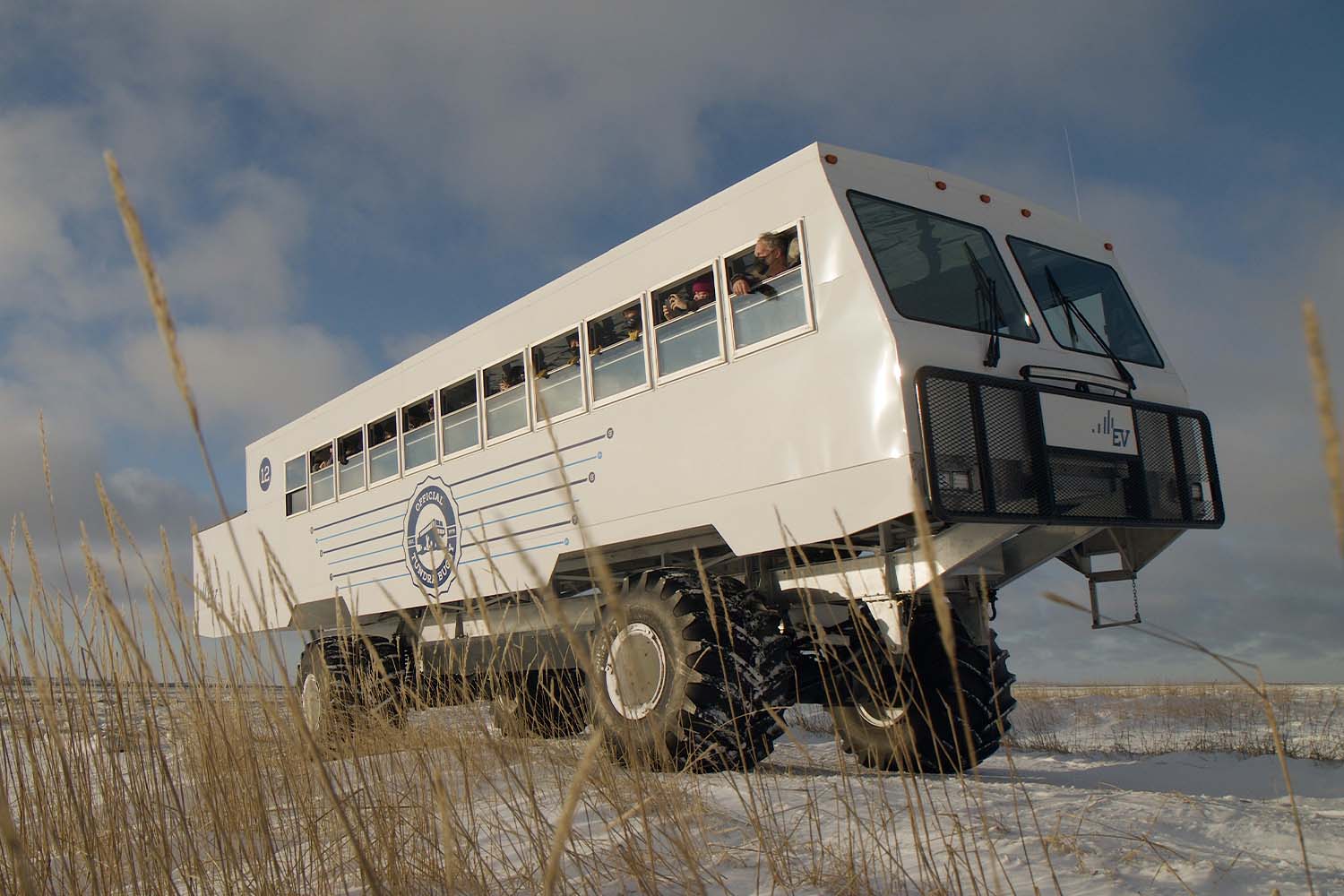
“It’s the fleet of Tundra Buggies,” said Gunter. “It was the single largest carbon-emitting, greenhouse-gas-emitting part of our business that we control — and so that was part of the calculus.” They partnered with the Conservation and Climate Fund, and the Vehicle Technology Centre (VTCI) to produce a cold-weather-ready electric vehicle.
Gunter adds that the electricity used to charge the buggies is from Manitoba’s grid, 98% of which is produced from clean and renewable sources. He adds that there is still a small diesel component, used to heat the vehicles, the bathroom water and to keep the batteries warm, but propulsion itself is now zero-emissions.
They debuted their first EV buggy in November of 2021, with two now running and a third on the way. They plan to have their entire fleet converted by 2032, reducing their greenhouse gasses (GHG) by an estimated 108.45 Tonnes CO2e per year. Similarly, the Tundra Buggy Lodge will be a hybrid of diesel and solar power this Fall.
Is There Really Such a Thing as Sustainable Travel?
These innovative companies are using virtual tech and responsible bookings to help transform the industryFor Botswana’s Desert & Delta Safaris, they are upgrading to friendly energy sources where they can at their lodges — five of their camps are powered by solar, for example. But it’s their luxury-focused, Chobe Game Lodge, which is set along the Chobe River and inside the Chobe National Park, that is making firsts on the continent.
“Chobe Game Lodge was the first safari property in Africa to introduce a fleet of electric game-drive vehicles and solar-powered boats to reduce the carbon footprint created from daily operations and guest activities,” Andrew Flatt, director of marketing at Desert & Delta Safaris told me. They want their safaris to be the leaders in sustainable tourism, he added.
Chobe Game Lodge also benefits from its location. It is connected to the grid, which in this case is powered by clean hydro-electric energy from Victoria Falls.
“We want [guest’s] expectation to be that I’m coming here to experience something that I have always wanted to experience,” added Flatt. “But [I] have [had] as little impact or negative impact on the place that I’m visiting as humanly possible.”
Reducing their footprint and impact — from having wastewater purification to greywater production or food waste that is processed to produce fuel for cooking — is part of their ongoing process of being climate friendly.
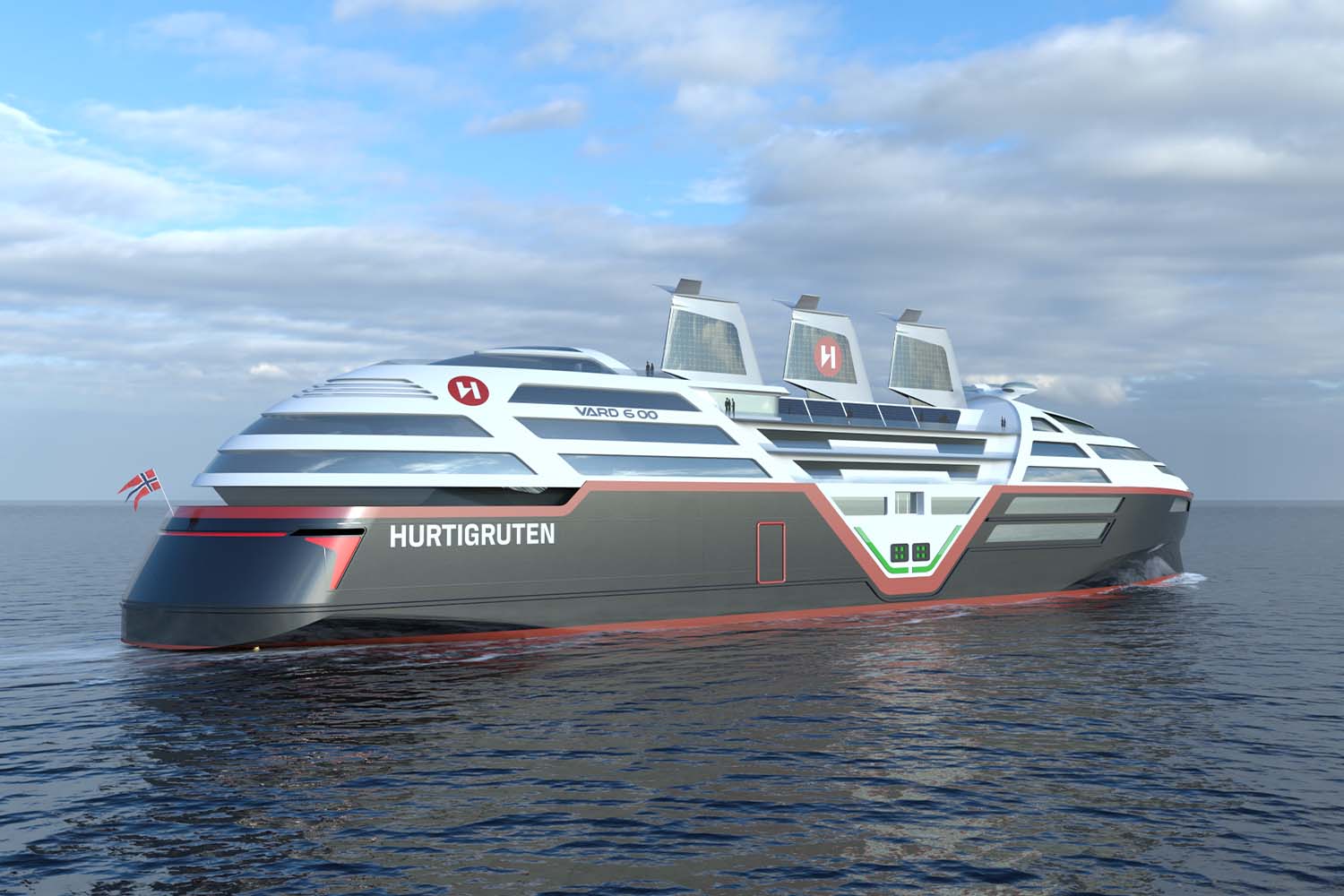
Off land, the race to be carbon neutral is also hitting both sea and sky.
The Norwegian company, Hurtigruten, which offers expedition cruises to the arctic and Antarctica, introduced the world’s first battery-hybrid cruise ship, the MS Roald Amundsen in 2019. On the 130th anniversary of Hurtigruten Norway, they announced Sea Zero to debut in 2030 as the world’s first zero-emissions, solar-sails ship.
“The biggest hurdle with Sea Zero is aiming to be the first-ever true zero emissions ship in operation, which involves deploying new technology with several uncertainties,” said Gerry Larsson-Fedde, SVP of marine operations at Hurtigruten Norway, noting that the maritime industry is in need of “urgent action to reduce emissions.”
Among their challenges, said Larsson-Fedde, is battery size, which they are resolving. “Additionally,” he added, “we need to establish onshore charging infrastructure, which requires cooperation with ports, local authorities and grid operators to ensure a consistent supply of green power.” They are also planning redundancy systems based on biofuels.
When it’s finished, Sea Zero will benefit from sun 24-hours a day in the summer in Norway. They are creating batteries that are as free from cobalt and nickel as possible. The ship will be guided by A.I., enabling them to slim the bridge down and make it more aerodynamic. When thrusters are not needed, they will retract for streamlining, and a solution on the hull will reduce water resistance.
“Our aspiration is to not only set an example, but also make the technology available to other companies striving to make a positive impact on the environment,” said Larsson-Fedde.
Tourism off-planet is a new thing, but it’s already evolving.
Right now, space tourism is limited to rocket-based competitors, like Blue Origin, Virgin Galactic and SpaceX. Boldly going, like this, is costly for adventurers and frequently emissions heavy. Space Perspective in the U.S. offers space tourism by balloon, seeking to be carbon-neutral and to democratize space access by 2024.
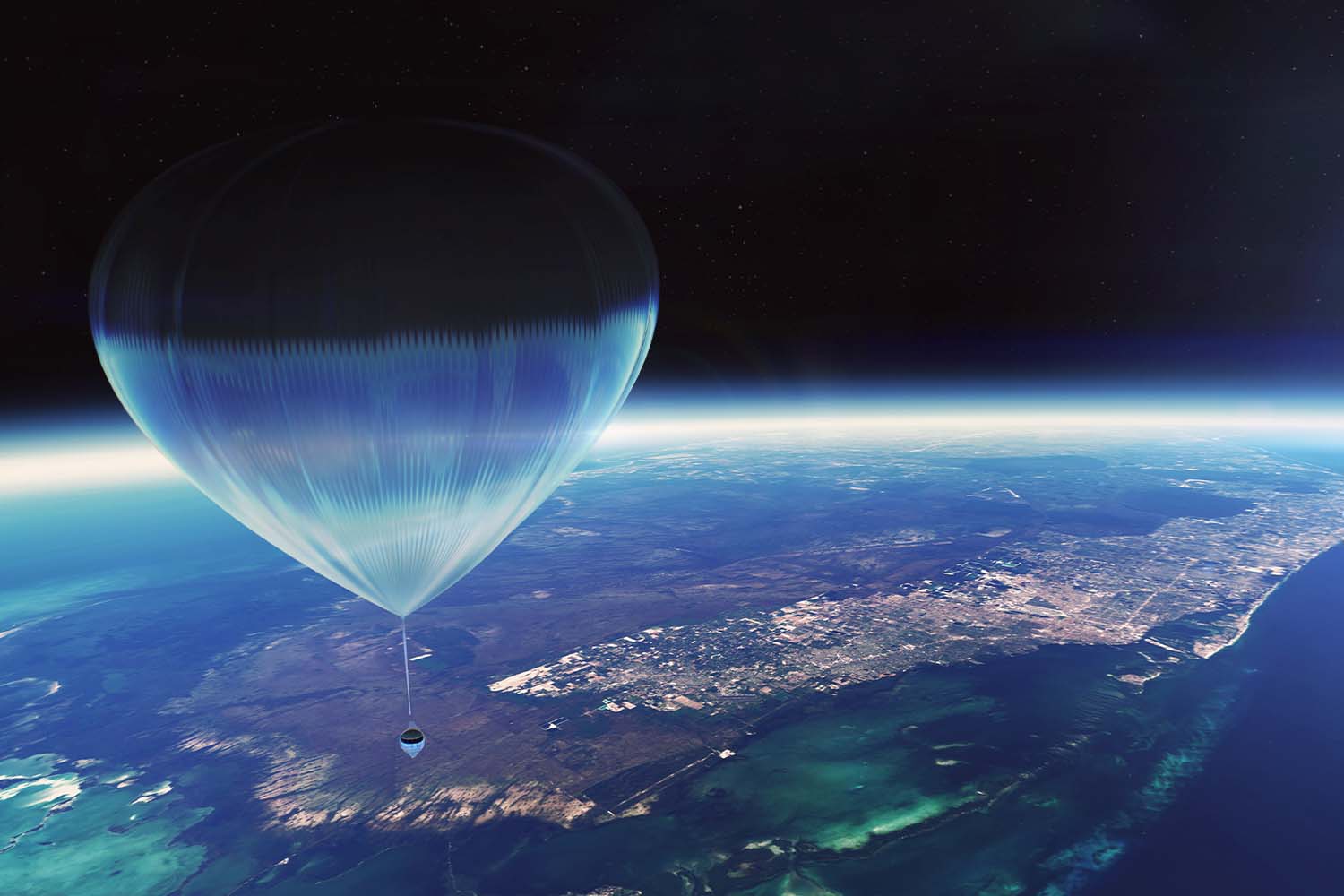
For Space Perspective, the idea is simple. Balloons, such as those developed by NASA and used successfully thousands of times, lift their capsule, Neptune, into the stratosphere at around 12 miles per hour. It will reach approximately 100,000 feet for a couple of hours and then it will slowly return. There are no rockets involved and unlike a submarine, a zero-pressure balloon won’t implode.
“So this is incredibly gentle,” said Jane Poynter, founder and Co-CEO of Space Perspective, “it’s incredibly smooth.” Poynter says they are using sustainable hydrogen, rather than helium. Where the cost of doing business is less sustainable for the moment, they are using offsets to stay carbon neutral.
Poynter, and her co-founding partner and spouse, Taber MacCallum lived in Biosphere 2, a research facility that was intended to test the idea of a closed ecosystem for use in space. Life inside the biosphere was perspective changing for her — comparable to the Overview Effect that astronauts feel when they see the planet from above. There’s a sense of connection to humanity and a reminder that the Earth is all that we have.
Biosphere 2 was also a type of Overview Effect, since they were entirely dependent on what they had in that facility for survival. “The result is the same,” said Poynter, “you suddenly get that we live as a single human family on a spaceship called Earth.”
While balloon tourism will not pass the Kármán line (330,000 feet) — the internationally recognized boundary for space — visually it will still provide that Overview Effect. She hopes that Space Perspective guests will see the planet the same way, as something to protect, and bring that new outlook back when they return.
Whether one is on the Tundra, or in Africa or at sea, shifting to low-impact, carbon neutral, or carbon-zero tourism is an emerging market demand. Eventually, Gen Z will dominate the market and they are those most-interested in phasing out fossil fuels. Businesses that refuse to evolve are risking their own extinction.
As more tourists are thinking about how they can have adventures without being part of the problem, knowing how a company is trying to change the way business is done will matter.
“Ultimately,” said Andrew Flatt, “you can save a physical animal, like say the rhino, but if the habitat environment that they live in is destroyed you’ve effectively killed that animal the same way as a poacher might.”
This article was featured in the InsideHook newsletter. Sign up now.
